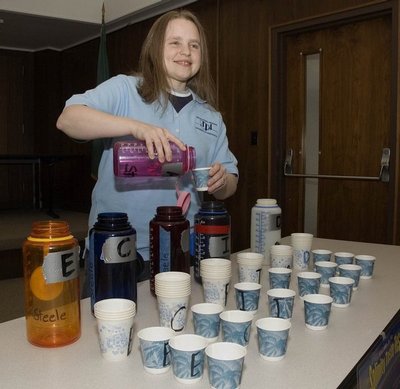February 23, 2006
Pacific Science Center in grips of polar blast March 2-5
With the extent of Arctic ice reaching record-breaking lows in recent seasons and Antarctic ice sheets losing dramatic, miles-wide pieces of ice, the world’s attention has been focused on changes underway at both ends of the Earth.
March 2 to 5, Pacific Science Center will host some of the nation’s top polar scientists –many right here at the UW — who will share the latest findings as well as their experiences working under what can be harsh, unforgiving conditions.
“Polar Science Weekend” is a partnership between Pacific Science Center, known in the region for its interactive exhibits and programs, and the UW’s Applied Physics Laboratory, a research unit with a $40 million-a-year program of basic and applied environmental science.
Appealing to all ages, but primarily aimed at families, teachers and students, the event will include hands-on discovery exhibits such as igloo building, snuggling into hooded cold-weather parkas and peeking into tents used in research camps stationed on the ice. Talks, films and posters will describe the widespread changes in the Arctic and Antarctica during the late 20th Century. See http://psc.apl.washington.edu/psw/
In the first UW-Pacific Science Center partnership on this scale, the UW is providing much of the content and many of the components of the exhibit, according to Dick Moritz, principal oceanographer at the Applied Physics Laboratory. Thirty staff from the lab and faculty and students from UW’s atmospheric sciences, oceanography and Earth and space sciences have donated many hours designing and building exhibits and preparing talks.
“It’s an effort in translating our work for the general public,” Moritz explains. For other UW faculty and departments it may serve as another model for outreach and educational activities.
Funding agencies such as the National Science Foundation have increasingly emphasized that researchers expecting to receive funding must show how they will explain the broader impacts of what they learn to the public, Moritz says. Recent National Science Foundation-funded work involving the laboratory includes installing instruments in two miles of ocean at the North Pole and using a plane to hopscotch across ice floes collecting samples. Information about both is on the Polar Science Weekend program.
“The interest and flow of information are not all on one-side, however, because we get a fresh perspective on our work through discussions with people who are not specialists in our field,” Moritz says.
Also participating in the exhibits are scientists from the National Oceanic and Atmospheric Administration’s Pacific Marine Environmental Laboratory in Seattle and the non-profit institute Earth and Space Research of Seattle.
There will even be an iChat with New York Times reporter Andy Revkin, who has been in the field with UW researchers and written about them as part of his new children’s book The North Pole was Here: Puzzles and Perils at the Top of the World.
The four-day event fits with the Applied Physics Laboratory’s own initiatives for increased public outreach, according to Ellen Lettvin, assistant director and an oceanographer at the lab.
“We have several successful mentoring programs, scholarship programs and outreach programs offering both formal and informal science education to the Puget Sound community,” she says.
Tag(s): Applied Physics Laboratory • Polar Science Weekend

